Introduction
The Internet is a powerful tool that can provide us with information, entertainment, communication, and education. However, when used excessively or compulsively, it can also become a source of addiction, affecting our physical, mental, and social well-being. Internet addiction is a type of behavioral addiction that involves the inability to control or stop one’s use of the Internet or other online devices, such as smartphones, computers, or video games, despite the negative consequences it causes to one’s life, health, or relationships. Internet addiction is a growing problem, especially among students, who are exposed to various online platforms and activities, such as social media, gaming, streaming, or online learning. In this article, we will explore some of the symptoms of Internet addiction, and how it can affect students’ academic, social, and emotional development.
Symptoms of Internet Addiction
One of the main symptoms of Internet addiction is the behavioral changes that occur as a result of excessive or compulsive online or device use. Some of the common behavioral symptoms are:
1. Spending more time online or on devices than intended or needed, often at the expense of other activities or obligations
2. Neglecting or ignoring one’s responsibilities, such as homework, assignments, exams, or chores, due to online or device use
3. Isolating oneself from real-life social interactions and meaningful relationships, and preferring online or virtual connections instead
These behavioral symptoms can have a negative impact on students’ academic performance, as they can reduce their attention span, impair their memory and learning, lower their motivation and self-regulation, and increase their risk of academic dishonesty or plagiarism. Moreover, these behavioral symptoms can also affect students’ social skills, as they can impair their ability to communicate, cooperate, or empathize with others, and make them more vulnerable to cyberbullying, online harassment, or peer pressure.
Another major symptom of Internet addiction is the psychological changes that occur as a result of excessive or compulsive online or device use. Some of the common psychological symptoms are:
01. Anxiety and depression, due to the stress, fear, or sadness caused by online or device use, or the lack of online or device use.
02. Irritability, due to the frustration, anger, or resentment caused by online or device use, or the interference of online or device use.
03. Lack of concentration, due to the distraction, boredom, or fatigue caused by online or device use, or the difficulty of focusing on other tasks or goals.
These psychological symptoms can have a detrimental effect on students’ mental health, as they can increase their levels of psychological distress, suicidal ideation, and self-harm. Furthermore, these psychological symptoms can also affect students’ emotional well-being, as they can lower their self-esteem, self-confidence, and self-worth, and make them more prone to mood swings, emotional instability, or emotional detachment.
Internet addiction is a serious and prevalent issue that can affect students’ academic, social, and emotional development. It is important to recognize the symptoms of Internet addiction, and seek help or intervention if needed. By using the Internet in moderation and balance, students can enjoy the benefits of online technology, without compromising their health, happiness, or success.
Causes of Internet Addiction
Internet addiction is a complex phenomenon that involves various factors that influence the behavior and cognition of the individual. Some of the main causes of internet addiction are:
A. Psychological Factors
Some psychological factors that contribute to internet addiction are:
- Escapism: Internet addiction can be a way of escaping from reality and coping with stress, boredom, loneliness, depression, anxiety, or other negative emotions. The internet provides a virtual world where the individual can create a different identity, interact with others, or engage in activities that are rewarding and stimulating.
- Low Self-Esteem: Internet addiction can be a result of low self-esteem, which is the evaluation of one’s worth and abilities. People with low self-esteem may feel insecure, inadequate, or inferior in their real life, and may seek validation, acceptance, or recognition from the online environment. The internet can also offer a sense of control, power, or competence that the individual lacks in their offline life.
- Impulse Control Issues: Internet addiction can be associated with impulse control issues, which are the inability to resist or regulate one’s urges, desires, or impulses. People with impulse control issues may have difficulty delaying gratification, managing their emotions, or planning ahead. They may also have a high sensation-seeking tendency, which is the need for novel, varied, or intense experiences. The internet can provide instant gratification, emotional stimulation, or novelty that the individual craves.
B. Environmental Factors
Some environmental factors that influence internet addiction are:
- Accessibility to the Internet: Internet addiction can be facilitated by the easy and widespread access to the internet, especially with the development of mobile devices and wireless networks. The internet can be accessed anytime and anywhere, which increases the exposure and availability of online activities and content. The internet can also be more affordable and convenient than other forms of entertainment or socialization.
- Lack of Face-to-Face Interaction: Internet addiction can be influenced by the lack of face-to-face interaction in the modern society, which can reduce the opportunities and skills for social and emotional development. The internet can offer a substitute for social and emotional needs, such as communication, intimacy, belonging, or support. The internet can also allow the individual to avoid or escape from interpersonal conflicts, responsibilities, or expectations.
- Social Pressure: Internet addiction can be affected by the social pressure from the online or offline environment, which can shape the individual’s attitudes, beliefs, or behaviors. The internet can create a sense of social comparison, competition, or conformity, which can motivate the individual to seek more online information, feedback, or approval. The internet can also expose the individual to social norms, trends, or influences, which can encourage the individual to adopt or follow certain online practices or lifestyles.
Types of Internet Addiction
Internet addiction can manifest in different forms, depending on the type of online activity or content that the individual is addicted to. Some of the common types of internet addiction are:
A. Social Media Addiction
Social media addiction is the excessive and compulsive use of social media platforms, such as Facebook, Twitter, Instagram, or Snapchat, to communicate, share, or consume online information. Social media addiction can be driven by the need for social connection, validation, or recognition, or by the fear of missing out, isolation, or rejection. Social media addiction can cause negative effects on the individual’s mental health, such as depression, anxiety, loneliness, or low self-esteem, as well as on their social relationships, academic performance, or work productivity.
B. Online Gaming Addiction
Online gaming addiction is the excessive and uncontrollable use of online games, such as massively multiplayer online role-playing games (MMORPGs), online gambling, or online sports betting, to play, compete, or cooperate with other players. Online gaming addiction can be motivated by the need for achievement, challenge, or mastery, or by the desire for fantasy, adventure, or escape. Online gaming addiction can lead to adverse consequences on the individual’s physical health, such as sleep deprivation, eye strain, or obesity, as well as on their psychological well-being, such as aggression, addiction, or withdrawal.
C. Cybersex and Online Relationships Addiction
Cybersex and online relationships addiction is the excessive and obsessive use of online platforms, such as dating apps, chat rooms, or pornography sites, to engage in sexual or romantic activities or interactions. Cybersex and online relationships addiction can be fueled by the need for intimacy, arousal, or gratification, or by the dissatisfaction, frustration, or insecurity in the offline relationships. Cybersex and online relationships addiction can result in negative impacts on the individual’s sexual health, such as sexually transmitted infections, erectile dysfunction, or sexual dysfunction, as well as on their emotional stability, such as guilt, shame, or betrayal.
D. Information Overload Addiction
Information overload addiction is the excessive and indiscriminate use of online sources, such as search engines, news sites, or blogs, to access, process, or store online information. Information overload addiction can be influenced by the need for knowledge, curiosity, or learning, or by the anxiety, uncertainty, or confusion in the offline world. Information overload addiction can cause detrimental effects on the individual’s cognitive functioning, such as attention, memory, or decision making, as well as on their stress level, mood, or behavior.
Treatment for Internet Addiction
Internet addiction is a serious and growing problem that requires professional help and intervention. Some of the effective treatment options for internet addiction are:
A. Psychotherapy
Psychotherapy is a form of psychological counseling that aims to identify and address the underlying causes and consequences of internet addiction, as well as to develop coping skills and strategies to overcome the addiction. Some of the common types of psychotherapy for internet addiction are:
- Cognitive Behavioral Therapy (CBT): CBT is a type of psychotherapy that focuses on changing the distorted or irrational thoughts and beliefs that contribute to internet addiction, as well as on modifying the maladaptive or harmful behaviors that result from internet addiction. CBT can help the individual to recognize and challenge their cognitive distortions, such as overgeneralization, catastrophizing, or personalization, as well as to replace their negative or self-defeating thoughts with more positive or realistic ones. CBT can also help the individual to monitor and control their internet use, such as by setting goals, keeping track, or rewarding themselves.
- Family Therapy: Family therapy is a type of psychotherapy that involves the participation of the family members or significant others of the individual with internet addiction, in order to improve the communication, understanding, and support within the family system. Family therapy can help the individual to express and resolve their emotional or relational issues that may trigger or exacerbate their internet addiction, such as conflict, neglect, or abuse. Family therapy can also help the family to establish and enforce healthy and consistent rules and boundaries regarding the internet use, such as by limiting the time, place, or content of the internet access.
B. Support Groups
Support groups are a form of social support that involves the interaction and exchange of experiences, feelings, or advice among people who share a common problem or goal, such as internet addiction. Support groups can provide the individual with internet addiction with a sense of belonging, empathy, or encouragement, as well as with a source of information, feedback, or guidance. Some of the types of support groups for internet addiction are:
- Online and Offline Support Networks: Online and offline support networks are groups of people who communicate and connect through online or offline platforms, such as websites, forums, or meetings, to offer and receive support for internet addiction. Online support networks can be convenient and accessible, especially for people who are isolated, ashamed, or afraid to seek help in person. Offline support networks can be more personal and intimate, especially for people who need more face-to-face interaction, accountability, or supervision.
- Peer Support: Peer support is a type of support that involves the mutual assistance and collaboration between people who have similar experiences or backgrounds, such as internet addiction. Peer support can be beneficial for the individual with internet addiction, as they can relate to and learn from someone who has been through or is going through the same situation. Peer support can also foster a sense of empowerment, responsibility, or recovery, as the individual can help themselves by helping others.
C. Digital Detox Strategies
Digital detox strategies are methods or techniques that aim to reduce or eliminate the exposure and dependence on the internet, in order to restore the balance and harmony between the online and offline life. Some of the digital detox strategies for internet addiction are:
- Setting Boundaries: Setting boundaries is a way of defining and limiting the scope and extent of the internet use, in order to prevent or reduce the negative effects of internet addiction. Setting boundaries can involve establishing and following specific rules or guidelines regarding the internet use, such as by setting a time limit, a frequency limit, or a content limit. Setting boundaries can also involve creating and maintaining a physical or mental distance from the internet, such as by turning off the notifications, deleting the apps, or avoiding the triggers.
- Establishing Offline Activities: Establishing offline activities is a way of engaging and investing in the activities or interests that do not involve the internet, in order to enhance or enrich the offline life. Establishing offline activities can involve exploring and pursuing the hobbies or passions that the individual enjoys or values, such as by reading, writing, painting, or playing music. Establishing offline activities can also involve strengthening and developing the relationships or connections that the individual cares about or needs, such as by spending time with family, friends, or pets.
Prevention Strategies
Internet addiction is a preventable and manageable problem that requires awareness and action. Some of the prevention strategies for internet addiction
- Education and Awareness: Education and awareness is a way of informing and educating the public and the individual about the nature, causes, effects, and solutions of internet addiction, in order to increase the knowledge and understanding of the problem. Education and awareness can involve providing and accessing reliable and relevant information, resources, or programs about internet addiction, such as by reading, watching, or attending lectures, workshops, or campaigns. Education and awareness can also involve raising and spreading the awareness and concern about internet addiction, such as by sharing, discussing, or advocating the issue with others.
- Parental Controls and Monitoring: Parental controls and monitoring is a way of regulating and supervising the internet use of children or adolescents, in order to prevent or reduce the risk of internet addiction. Parental controls and monitoring can involve applying and enforcing technical or behavioral measures to control or limit the internet access of children or adolescents, such as by installing software, setting passwords, or blocking sites. Parental controls and monitoring can also involve observing and evaluating the internet behavior and performance of children or adolescents, such as by checking the history, tracking the time, or reviewing the grades.
- Time Management Skills: Time management skills are the abilities and techniques to plan, organize, and prioritize the time and tasks, in order to optimize the productivity and efficiency of the individual. Time management skills can help the individual to prevent or overcome internet addiction, by helping them to balance and manage their online and offline activities and responsibilities, such as by making schedules, setting deadlines, or delegating work. Time management skills can also help the individual to avoid or cope with the distractions and procrastination caused by the internet, such as by setting goals, focusing attention, or rewarding themselves.
Conclusion
Internet addiction is a serious and growing problem that affects the individual and the society in various ways. Internet addiction can be caused by psychological or environmental factors, and can manifest in different types of online activities or content. Internet addiction can be treated by psychotherapy, support groups, or digital detox strategies, and can be prevented by education and awareness, parental controls and monitoring, or time management skills. Internet addiction is a challenge that requires the collaboration and cooperation of the individual, the family, the community, and the society, in order to achieve a healthy and harmonious relationship between the online and offline world.
FAQ
- Q: What is internet addiction?
- A: Internet addiction is a behavioral addiction that involves compulsive and uncontrollable internet use that interferes with daily life. It can manifest in different types of online activities or content, such as social media, gaming, cybersex, or information overload.
- Q: What are the symptoms of internet addiction?
- A: Some of the common symptoms of internet addiction are: excessive internet use, staying online longer than intended, lying about the extent of internet use, unsuccessful attempts to limit internet use, neglecting relationships, work, or school due to internet use, experiencing guilt, shame, or frustration about internet use, and continuing to use the internet despite negative effects on physical or mental health.
- Q: What are the causes of internet addiction?
- A: Internet addiction can be caused by various psychological or environmental factors, such as: escapism, low self-esteem, impulse control issues, accessibility to the internet, lack of face-to-face interaction, social pressure, or Shattered Reflections: Unraveling the Threads of Mental Health and Substance
- Q: What are the types of internet addiction?
- A: There are many types of internet addiction, depending on the type of online activity or content that the individual is addicted to. Some of the common types of internet addiction are: social media addiction, online gaming addiction, cybersex and online relationships addiction, and information overload addiction.
- Q: What are the treatment options for internet addiction?
- A: Internet addiction can be treated by various methods, such as: psychotherapy, support groups, or digital detox strategies. Psychotherapy can help the individual to identify and address the underlying causes and consequences of internet addiction, as well as to develop coping skills and strategies to overcome the addiction. Support groups can provide the individual with social and emotional support, as well as with information, feedback, or guidance from others who share the same problem or goal. Digital detox strategies can help the individual to reduce or eliminate the exposure and dependence on the internet, and to restore the balance and harmony between the online and offline life.
- Q: What are the prevention strategies for internet addiction?
- A: Internet addiction can be prevented by various measures, such as: education and awareness, parental controls and monitoring, or time management skills. Education and awareness can help the public and the individual to increase the knowledge and understanding of the nature, causes, effects, and solutions of internet addiction, and to raise and spread the awareness and concern about the problem. Parental controls and monitoring can help to regulate and supervise the internet use of children or adolescents, and to prevent or reduce the risk of internet addiction. Time management skills can help the individual to plan, organize, and prioritize the time and tasks, and to balance and manage their online and offline activities and responsibilities.
- Q: How common is internet addiction?
- A: Internet addiction is a fairly common problem, affecting an estimated 1.5 to 8.2 percent of people in North America. However, the exact prevalence of internet addiction may vary depending on the definition, criteria, and measurement of the disorder, as well as on the characteristics of the population and the culture.
- Q: How is internet addiction diagnosed?
- A: Internet addiction is not officially recognized as a disorder in the United States, and there is no standardized diagnostic criteria or test for it. However, some researchers and clinicians have proposed and used various scales and questionnaires to assess the severity and impact of internet addiction, such as the Internet Addiction Test (IAT), the Compulsive Internet Use Scale (CIUS), or the Chen Internet Addiction Scale (CIAS).
- Q: How does internet addiction affect the brain?
- A: Internet addiction can affect the brain in similar ways as substance addiction, by altering the structure and function of the brain regions involved in reward, motivation, emotion, and cognition. Internet addiction can cause changes in the levels of neurotransmitters, such as dopamine and serotonin, which are responsible for the feelings of pleasure and satisfaction. Internet addiction can also affect the neural pathways, such as the prefrontal cortex and the amygdala, which are involved in decision making, impulse control, and emotional regulation.
- Q: How can I help someone with internet addiction?
- A: If you are concerned about someone who may have internet addiction, you can help them by: expressing your care and concern, without being judgmental or critical, encouraging them to seek professional help or join a support group, being supportive and understanding of their recovery process, setting healthy and consistent boundaries and expectations regarding their internet use, engaging them in offline activities and interests that they enjoy or value, and taking care of your own physical and mental health.
Important Notice:
The information provided on “health life ai” is intended for informational purposes only. While we have made efforts to ensure the accuracy and authenticity of the information presented, we cannot guarantee its absolute correctness or completeness. Before applying any of the strategies or tips, please consult a professional medical adviser.















